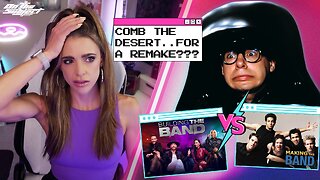Premium Only Content

How to Play Super Smash Bros Melee (Gamecube)
This video is a guide on how to play Super Smash Bros Melee (Gamecube) on your Wii U console.
In this video, we'll cover the basics of how to play Super Smash Bros Melee (Gamecube) on your Wii U console. We'll teach you how to maneuver your character around the battlefield, and how to use your weapons and items to defeat your opponents.
Whether you're a new player or a seasoned veteran, this video will guide you through the basics of playing Super Smash Bros Melee (Gamecube) on your Wii U console. So Sit Back and Get Ready to Play Some Smash Bros!
Like its predecessor, Super Smash Bros. Melee differs from traditional fighting games as the objective is to force their opponents beyond the boundaries of the stage. Most attacks inflict damage and can, if enough damage is dealt, knock back the enemy. Each character's health is measured by a meter that represents damage as a percentage. The higher the percentage value, the farther the player gets knocked back, and the easier they are to knock off the stage, which will result in the character's death and the loss of a stock, or life. Unlike other games of the same genre, in which moves are entered by button-input combinations, most moves in Super Smash Bros. Melee can be accessed via one-button presses and a joystick direction. For example, by tilting the joystick to the side and pressing the "B" button, the character will use their "side special" attack. Tilting the joystick up, down, or not tilting it at all while pressing B will use the up, down, or neutral special, respectively.
During battles, items related to Nintendo games or merchandise fall onto the game field.[6] These items have purposes ranging from inflicting damage on the opponent to restoring health to the player.Some items are throwable (ranged items), some do melee damage (battering items), and some have an instant effect on the player (transforming items).
Most stages have a theme relating to a Nintendo franchise or a specific Nintendo game and are interactive to the player. For example, the Mushroom Kingdom stage is from Super Mario Bros, and the Temple stage is from The Legend of Zelda. Although the stages are rendered in three dimensions, players can only move on a two-dimensional plane. Not all stages are available immediately; some stages must be "unlocked" by achieving particular requirements.Some stages feature moving elements and platforms and hazards that harm players, while others lack these elements.
-
 LIVE
LIVE
SpartakusLIVE
6 hours agoAre they really going to end WZ?? || Duos w/ @GloryJean
360 watching -

MyronGainesX
19 hours ago $25.50 earnedIsrael Strikes Iran! WAR is here! ICE Riots, Diddy Trial And More!
129K35 -
 LIVE
LIVE
Alex Zedra
3 hours agoLIVE! Siege X
172 watching -
 4:58:19
4:58:19
GloryJean
5 hours ago#1 Gamer Dad Dominates on MnK 🖱️
35.5K1 -
 8:04
8:04
MattMorseTV
9 hours ago $5.18 earnedTrump just DROPPED a BOMBSHELL on California.
48.5K44 -
 46:10
46:10
Friday Beers
10 hours ago $1.20 earnedSkeletons, Cults, & Ex-Girlfriends Terrorize Our DND Campaign
40.5K1 -
 2:03:41
2:03:41
megimu32
4 hours agoON THE SUBJECT: STOP REMAKING CLASSICS — Hollywood Is Out of Ideas!
46.6K8 -
 1:16:43
1:16:43
Precision Rifle Network
1 day agoS4E19 Guns & Grub - Let's Talk About Wind
26.8K2 -
 3:31:13
3:31:13
SoundBoardLord
5 hours agoThriller Thursday! Is Simon There? TERRIFYING!
16.6K4 -
 LIVE
LIVE
FomoTV
3 hours ago🔥 ICE Protests Erupt, Israel Strikes Iran, Missiles Launched – Global Flashpoints LIVE 🚨 | FOMOCAST 06.12.25
132 watching